Hose whip on concrete pumps
The purpose of this Safety Alert is to highlight the hazards and risks to workers and other persons caused by hose whip on concrete pumps.
'Hose whip' describes the uncontrolled and rapid motion of the flexible rubber hose on the end of a concrete placement boom or other concrete delivery line.
Background
A number of pedestrians walking past a Darwin construction site during a concrete pour were sprayed with concrete slurry as a result of hose whip due to a block in the line. The pedestrians suffered no injuries; however other incidents of hose whip have previously caused serious injuries and resulted in the death of a construction worker in Queensland in 2007.
Contributing factors
A hose whip can occur during the concrete pumping operation itself or when the line is being cleaned out. In either case, hose whip can be especially violent when air enters the line and becomes pressurised by the pumping process.
Persons can either be injured as a result of being struck directly by the whipping hose itself or being knocked over and hitting the ground or an object.
The likelihood of hose whip can be greatly reduced by the selection of suitable plant and safe systems of work. While the risk of hose whip can be reduced, additional precautions need to be taken to reduce the likelihood of injury.
To minimise the likelihood of injury from hose whip the following twelve safety precautions are to be addressed:
- only pump concrete that is a pumpable mix as specified by the concrete supplier. Other mixes of concrete can block the line and cause hose whip
- start the pump up slowly to reduce the likelihood of hose whip
- never attach metal fittings to the free end of the rubber delivery hose
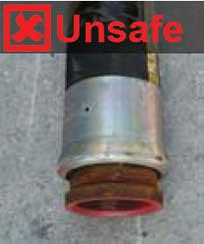
- never try to stretch the delivery hose if it doesn’t reach the pouring location
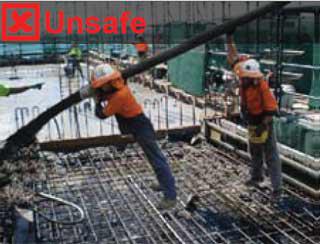
- the delivery hose on a boom pump should hang close to vertical and only be guided by the line hand. If the boom is not long enough to reach the concrete pour area, a larger boom should be used or the concrete pump should be moved closer to the job
- do not allow concrete to drop out of the hose when pumping is stopped, as this can allow air to enter the system. The hose can be folded over to prevent concrete dropping out
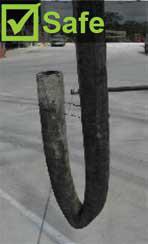
- always ensure the line hand has an adequate sized area to stand on (the width of the working surface should be 450 mm or greater). The line hand should not stand on block walls or next to unprotected edges
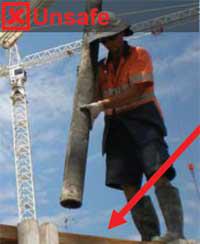
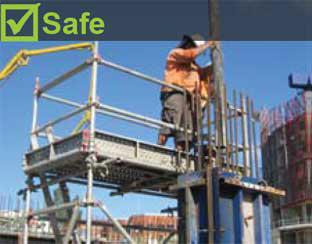
- monitor the level of concrete in the hopper to avoid air getting sucked into the pump system. Ensure a separate person to the line hand is in position to view the hopper. This will normally be the pump operator
- do not let the concrete solidify in the line because this will cause blockages. The concrete needs to remain in its plastic state
- make sure safe work procedures are adopted for clearing blockages
- preferably clean out the concrete line with water instead of air
- when there are no other options but to clean the pump line out with air, secure the end of the steel line and have an exclusion zone. All reducers and the rubber hose must be removed from the end of the delivery line. A ball catcher should be fitted to the end of the steel pipe. This will contain the blow out plug (i.e. sponge) as it is ejected from the line.
Disclaimer
This Safety Alert contains safety information following inquires made by NT WorkSafe about an incident or unsafe practice. The information contained in this Alert does not necessarily include the outcome of NT WorkSafe’s action with respect to an incident. NT WorkSafe does not warrant the information in this Alert is complete or up-to-date and does not accept any liability for the information in this report or as to its use.
This Safety Alert contains information reproduced with permission from Workplace Health and Safety Queensland.